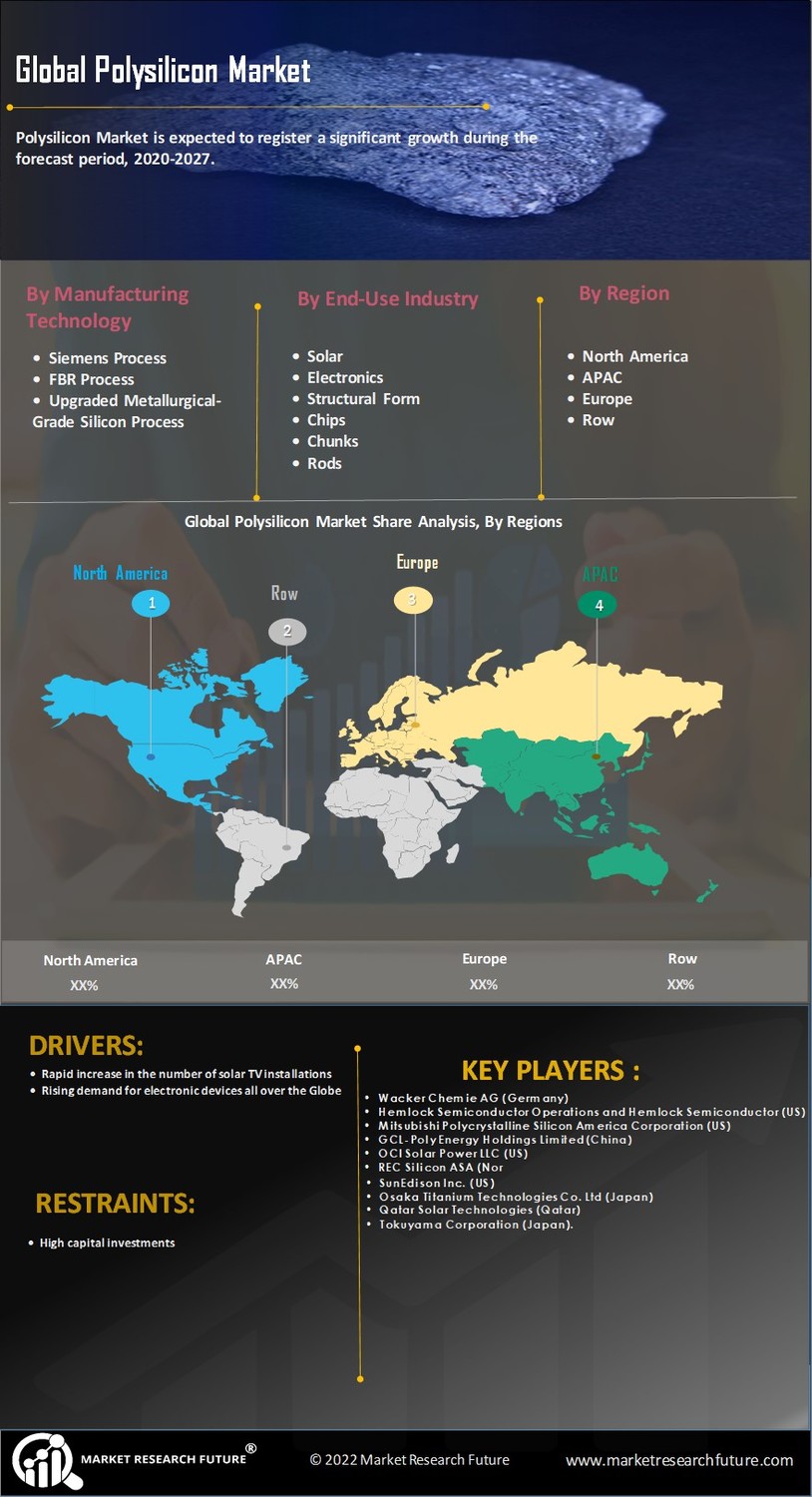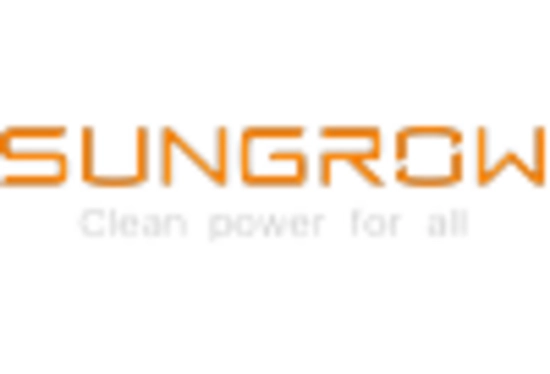Rising Global Energy Demand
The increasing The Polysilicon Industry. As populations grow and economies develop, the need for sustainable energy solutions becomes more pressing. In 2025, energy consumption is projected to rise significantly, prompting a shift towards renewable sources such as solar energy. This shift is likely to enhance the demand for polysilicon, as it is a fundamental material in solar panel production. The International Energy Agency forecasts that renewable energy sources will account for a larger share of the energy mix, with solar energy leading the charge. Consequently, the polysilicon market is expected to expand in response to this growing energy demand, as stakeholders seek to invest in cleaner and more sustainable energy technologies.
Government Policies and Incentives
Government policies and incentives aimed at promoting renewable energy are pivotal drivers for the Polysilicon Market. Many countries have implemented favorable regulations, subsidies, and tax incentives to encourage the adoption of solar energy technologies. In 2025, these initiatives are expected to bolster the demand for polysilicon, as manufacturers and consumers alike benefit from reduced costs associated with solar installations. For instance, feed-in tariffs and renewable energy certificates have proven effective in stimulating market growth. Additionally, international agreements focused on reducing carbon emissions further emphasize the need for clean energy solutions, thereby enhancing the role of polysilicon in the energy landscape. This supportive regulatory environment is likely to sustain the momentum of the polysilicon market, fostering innovation and investment.
Increasing Adoption of Solar Energy
The rising adoption of solar energy systems is a primary driver for the Polysilicon Market. As countries strive to meet renewable energy targets, the demand for solar photovoltaic (PV) cells has surged. In 2025, the solar energy sector is projected to account for a substantial share of the energy mix, with polysilicon being a critical component in the manufacturing of solar panels. The International Energy Agency indicates that solar power capacity could reach over 1,000 GW by 2025, further propelling the polysilicon market. This trend reflects a broader shift towards sustainable energy solutions, as both residential and commercial sectors increasingly invest in solar technologies. Consequently, the polysilicon market is likely to experience robust growth, driven by the escalating need for efficient and cost-effective solar energy solutions.
Expanding Applications Beyond Solar Energy
The diversification of applications for polysilicon is emerging as a significant driver for the Polysilicon Market. While solar energy remains the primary application, polysilicon is increasingly utilized in the electronics sector, particularly in the production of semiconductors and photovoltaic devices. In 2025, the demand for high-performance electronics is anticipated to grow, further expanding the polysilicon market. The rise of electric vehicles and energy storage systems also presents new opportunities for polysilicon applications. As industries seek to enhance energy efficiency and performance, the versatility of polysilicon positions it as a key material in various technological advancements. This trend suggests that the polysilicon market may not only thrive due to solar energy demand but also benefit from its expanding role in other high-tech applications.
Technological Innovations in Manufacturing
Technological advancements in polysilicon production processes are significantly influencing the Polysilicon Market. Innovations such as the Siemens process and fluidized bed reactor technology have enhanced production efficiency and reduced costs. These advancements enable manufacturers to produce high-purity polysilicon, which is essential for the performance of solar cells. In 2025, the market is expected to benefit from these innovations, as they allow for increased output and lower energy consumption during production. Furthermore, the integration of automation and digital technologies in manufacturing processes is likely to streamline operations, thereby improving overall productivity. As a result, the polysilicon market may witness a surge in supply, meeting the growing demand from the solar energy sector and other applications.















Leave a Comment